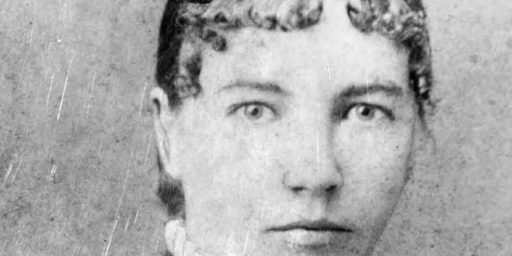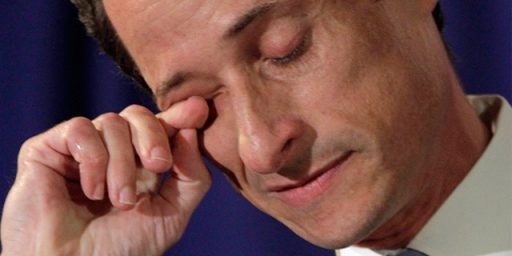‘Little House’ Books a Collaborative Effort?
Those of us over a certain age recall the “Little House on the Prairie” television series and many of us read several of the Laura Ingalls Wilder books upon which it was loosely based. An interesting New Yorker profile by Judith Thurman examines the story behind the story.
Wilder scholarship is a flourishing industry, particularly at universities in the Midwest, and much of it seeks to sift fiction from history. The best book among many good, if more pedestrian, ones, “The Ghost in the Little House,” by William Holtz, a professor emeritus of English at the University of Missouri, explores a controversy that first arose after Wilder bequeathed her original manuscripts to libraries in Detroit and California. It is the work of a fastidious stylist, and, in its way, a minor masterpiece of insight and research. Holtz’s subject, however, isn’t Laura Ingalls Wilder. It is her daughter and, he argues, her unacknowledged “ghost,” Rose Wilder Lane.
[…]
Rose saw her mother as a literary apprentice, not as an artist, even though she had always encouraged Wilder’s writing—first the journalism, then the juveniles; they were a less strenuous and more profitable source of income for an elderly woman than chicken farming. But, whatever art may be, the Little House books fulfill its purpose as defined by Horace: “to entertain and to inform.” Mother and daughter essentially divided that labor. One has to suspect that the delicious minutiae of the books’ famous how-to chapters on molding bullets, pressing cheese, digging a well, making a rag doll, drying plums, framing a house, and smoking a ham, among dozens of daily activities, were mostly Laura’s contribution. (In my favorite of many Christmas scenes, little Grace gets an elegant new coat and hood, trimmed in swan’s down; her father shot the bird, her mother cured the skin and did most of the sewing, and her older sisters pieced out the lining from scraps of blue silk.) It was what Laura knew, loved, and had proved, in her columns for the Ruralist, that she could write about.
Rose had proved that she could romanticize whatever material she was given. She did some minor tinkering with “Pioneer Girl,” but, once it was decided to fictionalize the memoir as a children’s story—the idea had come from an editor who rejected the memoir—she took a more aggressive role. It varied in intensity from book to book, but she dutifully typed up the manuscript pages, and, in the process, reshaped and heightened the dramatic structure. She also rewrote the prose so drastically that Laura sometimes felt usurped. “A good bit of the detail that I add to your copy is for pure sensory effect,” Rose explained in a letter.
John Miller, a thorough biographer and historian who, like Holtz, compared the manuscripts with the published texts, came to a different conclusion about the collaboration. In the introduction to his book “Becoming Laura Ingalls Wilder,” he writes, “Wilder demonstrated a high degree of writing competence from the beginning, and her daughter’s contribution to the final products, while important, was less significant than has been asserted.” (The four pages of manuscript that he reproduces arouse more questions than they settle, however. In Laura’s scribbled margin notes to Rose—points of fact about geography—she misspells definite as “deffinite” and remarks that her husband “don’t remember” the distance between two towns.) A concise, recent biography by Pamela Smith Hill, “Laura Ingalls Wilder: A Writer’s Life,” is more overtly partisan. Hill accuses Rose of insensitivity to her mother’s “imaginative vision,” and, at times, of arrogance, condescension, bullying, self-aggrandizement, and even plagiarism. (Rose secretly wrote an adult novella of her own, “Let the Hurricane Roar,” which was widely admired and sold briskly. The substance and characters were pillaged from “Pioneer Girl.” Laura apparently never read the book, and considered it a betrayal.)
The cumulative evidence suggests that sometimes Laura stood her ground and sometimes she was cowed into submission, but most often she solicited and welcomed Rose’s improvements. When Rose left the farm, in 1935, the editing of the five books yet to come was done by correspondence. “I have written you the whys of the story as I wrote it,” Laura told her in a letter that accompanied a draft of volume four, “On the Banks of Plum Creek,” “but you know your judgment is better than mine, so what you decide is the one that stands.” Rose, for her part, could be an insufferable didact. She played down her authority, even as she hammered it home: “I’m trying to train you as a writer for the big market,” she had told her mother in 1925. (Laura had written an article about her Ozark kitchen, which, heavily revised, had appeared in the magazine Country Gentleman.) “You must understand that what sold was your article, edited. You must study how it was edited, and why. . . . Above all, you must listen to me.”
Truth is both stranger and more interesting than fiction here. But rather more sad.
via Jason Kottke






Not really. Thomas Wolfe’s first novel Look Homeward Angel is most definately a collaborative effort between him and his editor Maxwell Perkins. Wolfe has a tendency of wondering off the narrative path and goes off on tangent. Perkins also makes suggestions that clarified the story.
This may be shocking, but not to people who produce fiction for a living.
There are plenty of intrusive editors in the world. This editor happened to be Laura’s daughter. But this kind of thing happens all the time. It’s the way the business works.
I just listened to a panel of
toolsagents at SCBWI (Society of Childrens Books Writers and Illustrators) rattling on about spending 6 monthshammeringencouraging a writer to do extensive rewrites. And this before the ms ever went to a publishing house for their editing contributions.Further, there’s a lot of ghosting. I’ve ghosted and been ghosted. I’ve edited and been edited. And I’ve worked under 12 different names so far, passing as a female writer, a male writer and a gender-neutral.
I’m currently arguing with my German publisher who wants to cut the violence, religion and lesbianism out of a book of mine.
Like legislation and sausage, sometimes it’s best not to know how things get made.
Indeed, we are all Michael Reynolds.
Yeah, my understanding is that Wolfe showed up at Perkins’s office with a cardboard box filled with in-no-order typewritten pages, and Look Homeward, Angel was the result. (Points for who can identify the text from which the title is taken. The only time in English literature, that I know of, that the lessless© version of word has ever been used.)
And evidently The Wasteland was twice as long as we now have it before Eliot sent it to Pound to “look over”.
Another example of this, which is dear to Obama and my hearts, is Conan. Robert Howard published his Conan stories in the 1930s pulps, in a writing style closer to that of Chandler and Hammett. Following the success of the Lord of the Rings, L. Sprague De Camp obtained control of the copy-write, revised the stories, ostensibly to appeal more to Tolkien readers, and added his own stories. He further made efforts to prevent the original versions from being published, denigrating Howard’s writing in the process. For decades, the De Camp versions were the only one’s in print.
@Michael
On when an intusive editor can be a godsend. Many, many (many) years ago, when I was in the edit biz, I was talking to a children’s book editor. He told me that a lot of folks think writing a kid’s book is easy, but it ain’t. He was always getting ms from people who thought it was. His personal fav was a book titled, The Icecube Who Wanted to Be a Cowboy. Plot synopsis: Icecube in Chicago wants to be a cowboy. After many misadventures, he arrives in Texas. Final scene: Joyous icecube mounts horse at the cattle round-up, but, alas, in the heat of the Texas sun, melts, and all that is left is a little puddle of water on the saddle with a tiny cowboy hat floating on it.
Wonder what the kids would have thought of that.